In the wake of last year’s No Man’s Land: Women Artist’s from The Rubell Family Collection, and the unprecedented Larry Gagosian / Jeffrey Deitch collaboration at Art Basel Miami, Unrealism (which, according to Deitch, was born out of being “struck by the work of emerging figurative painters – many of them women,” a quaint confession), Birch Contemporary has produced a kind of rebuff to the still-persistent sex-sells currency of women-driven exhibitions. Kicking off the new year is an elegant group show that both perverts and nails the subjects of female sexuality, commodity, and agency. Robert Birch and assistant director Rebecca Travis substitute grace and nuance for the obvious, but never strip the genre of its assertions.
The curatorial text opens with an assertion of old news: “Art historically, depictions of women’s sexuality and beauty have been rendered predominantly by and for men”; “This imagery has both responded to current fashions and sensibilities, and aided in constructing contemporary notions of female beauty, sex, and eroticism, but from men’s perspective and desires.” We’re calling up John Berger’s “the male gaze,” here, made popular in the late 1960s with his series and book Ways of Seeing. The reminder carries import, however, as critic Ben Davis recently made clear in his essay “White Walls, Glass Ceiling.” “Today, women have battled for and won the right to be taken seriously as artists. […] And yet despite the outward appearance of fair-mindedness, in some ways women remain disadvantaged as artists. [We need to figure] out the structural mechanisms that make bias tenacious and enduring.” He addresses the source of this inequality as being structural; that is, the hot new artists to hit the market will be determined by the “titans of industry” who have the power to affect everything from what sells at auction houses to how museum trustees determine acquisitions, expansions, and programming. However Birch reminds us that this inequality bears itself out materially, as well, in terms of the subject of sex, not just the gender of its makers.
As such, Sexish trumps the idea of the persistent supremacy of the male gaze by presenting “an exhibition framed by the female gaze – women as seen by women, with a title deliberately eluding a fixed or determined state – mirroring its continuously evolving and unresolved subject.” With the required subtlety to hit its mark, Sexish moves the needle of our desire while asserting eroticism and feminine power in left-of-obvious motifs.
Only two of the seven artists presented here, Cathy Daley and Janet Werner, are represented by Birch Contemporary, and they’re also the most senior. Three emerging talents (Julie Moon, Maryanne Casasanta, and Dara Vandor) largely carry the show, with Casasanta’s intimate, cropped photographs of crossed legs and thigh creases proving the seed from which the group show grew; Vandor’s hyper-realist paintings of silky fabrics and underthings deliver a shot of un-demure sensuality; and Moon’s hybrid sculptures provide material weight.
Figuration runs the spectrum from photographic to obscure and nearly abstract, but references to the female body are inescapably a through-line. Casasanta’s photographs, for instance, depict the leg folds and crotch caverns of her female sitters (perhaps the artist herself) donning different fabrics and wryly directing our desire to the tactility and palette of their sheaths. Vandor, on the other hand, focuses on “intimate wear” as a proxy for sexuality. Her Dirty Underwear (2015), rendered in ink on canvas, consists of “lacy unmentionables” that are unquestionably erotic from afar, but up close, touched by a smear of white running down the center, suggesting a recent state of arousal, or the simple reality of a lived day.
There is something celebratory about the exhibition, which steers away from overt politics and polemics, and instead focuses on clear, sometimes banal acts of defiance and lets them stand in as symbols for a larger form of resistance, echoing Emily Dickinson’s timeless words: “My Life had stood – a Loaded Gun.”
Orly Cogan‘s embroidered images of female figures engaged in everyday activities are a case in point. The works are reminiscent of Tracey Emin‘s works on fabric, but where Emin focuses on her own dysfunction or demons, Cogan regales the viewer with delicately fashioned images of women engaged in the quotidian. Embroidered on found fabrics, and using traditional “crafting” techniques, the artist uses stains naturally occurring in her material to great effect. Her piece Woman’s Work (2004) features a hand-stitched embroidery of a nude woman engaged in vacuuming the surrounding fabric. A naturally occurring red stain emanating from her pubic area and running down the length of her leg suggests menstruation. Yet the subject carries on with her work unfazed. She stares at the viewer knowingly as if to say “it’s all in a day’s work.” Elsewhere, Cogan’s piece Mirror Mirror (2006) features a fully-clothed female figure laying on a bed, staring at a mirror in the fashion of a Narcissus (or Teen Bop ad), upon which rest three lines of cocaine. She holds the obligatory rolled-up bill in her hand. Cogan’s females aren’t downtrodden, they are not defeated or resigned; they seem to be living out their lives as individuals, they are self-reliant and powerful. But, most importantly, they are contemporary.
A formalist vein runs through some of the pieces on display, particularly with the sculptures of Moon, which remind one of Valérie Blass’s abject figuration, or the mixed-media touches in Shary Boyle’s porcelains. Where these artists can seem intent on producing uncanny effects, and at times distracted by the subversions of their material, Moon’s sculptures are pulsing with vulnerability.
Werner, one of Canada’s leading figurative painters and almost always a painter of women, presents in Abby and Snow (2014) a self-assured woman, standing fully clothed and staring out as though divulging a secret; behind her a male figure wearing a ridiculous mask and hat leans against a wall, totally unimportant but suggesting a delusional self-image of inclusion and cool.
The most elegant pieces on show belong to Ilona Szalay, whose oil-resin-on-canvas pictures have a quality reminiscent of the simplicity of the clay masks left behind by the prehistoric Haniwa people of Japan, who, with an economy of line and form, can convey powerful meaning and depth. Working in the grey-scale, Szalay’s women are sexualized, but on their own terms. They mill about the house wearing sexy clothing, but for their own benefit. They seem to be perfectly content with themselves, without a hint of longing or irony. And this encapsulates the magic of this show. Sexish manages to be sexual without being exploitative, and looks at female sexuality not as a transactional asset or an object of desire, but as an intrinsic value that imbues the individuals depicted with power, dignity, and intrigue.

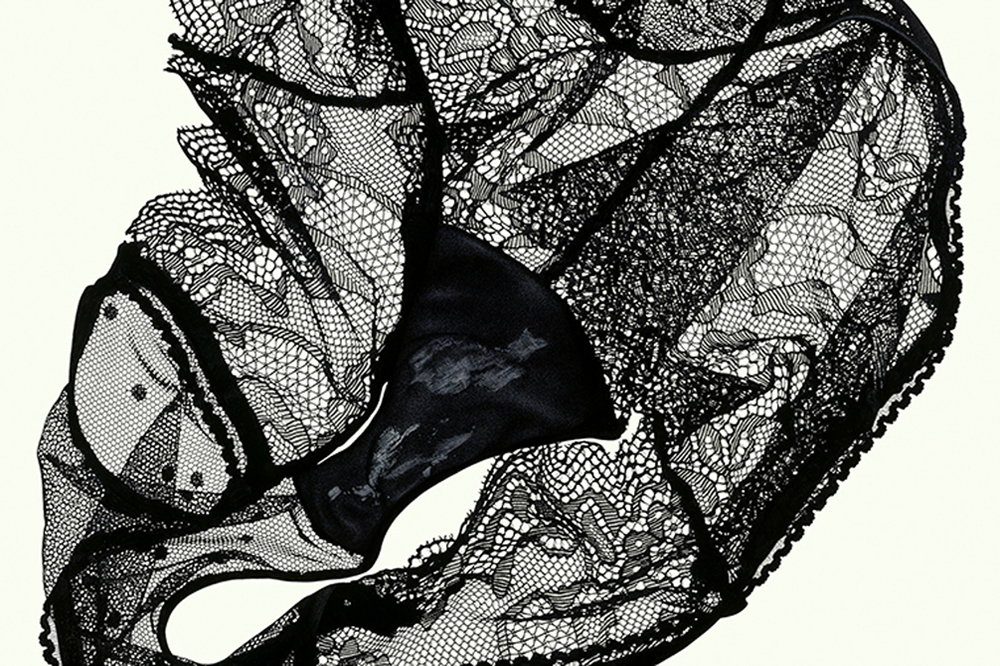
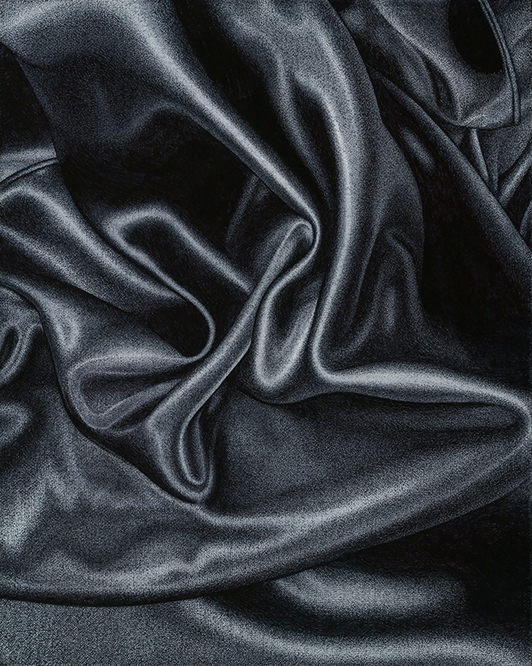
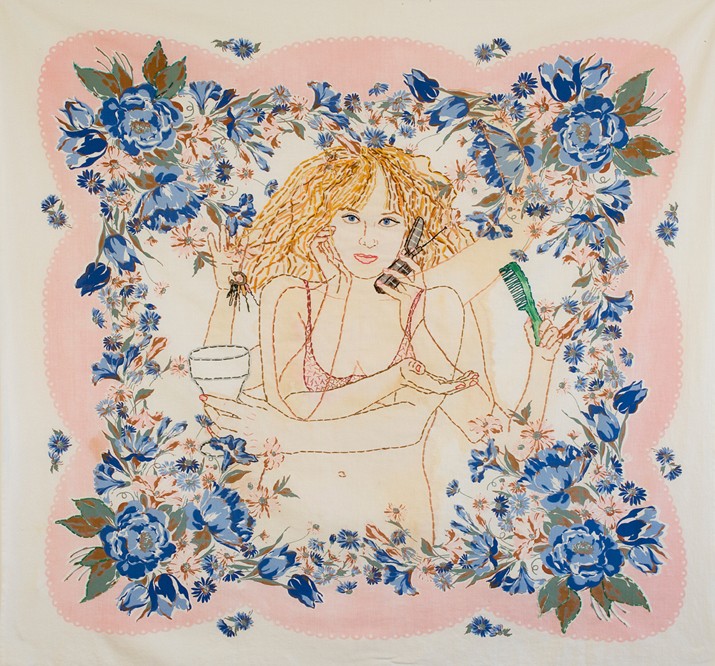
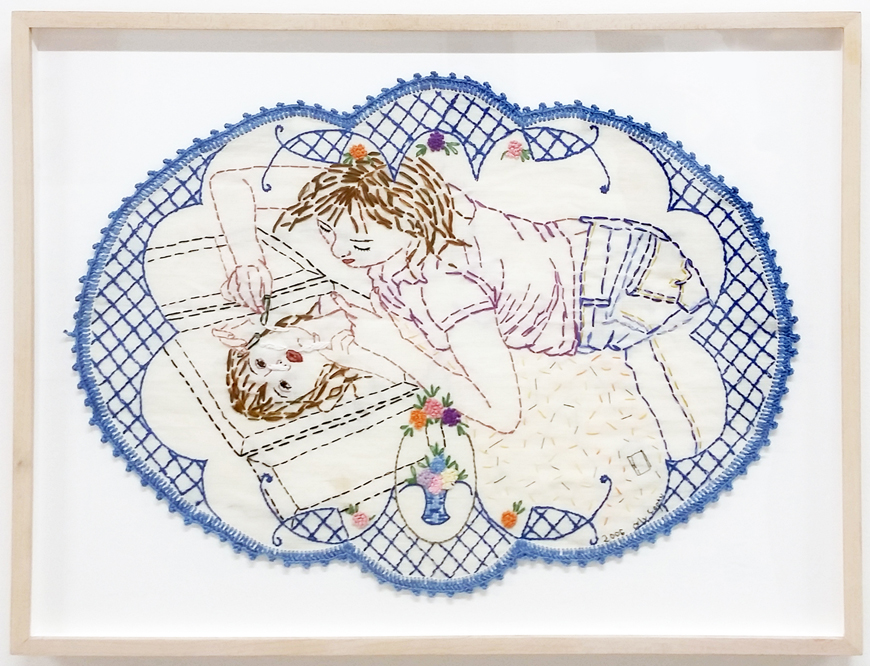
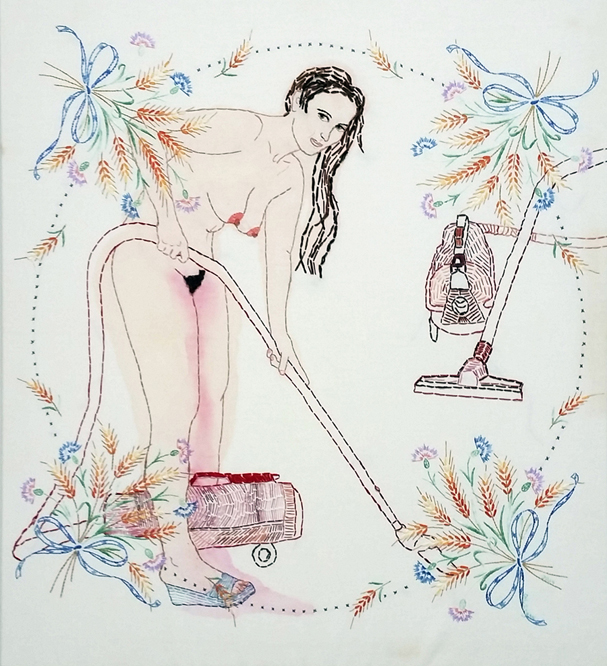
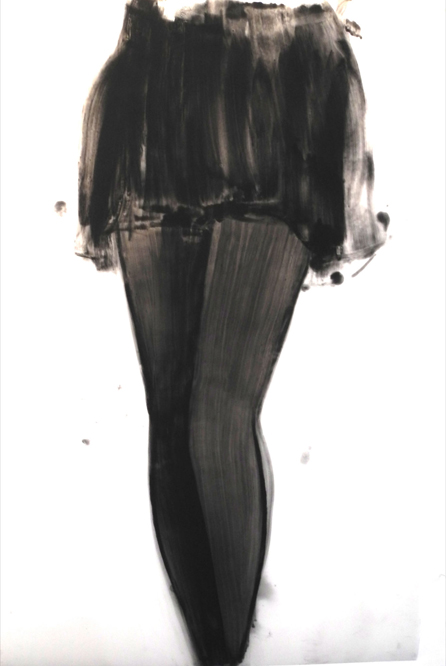
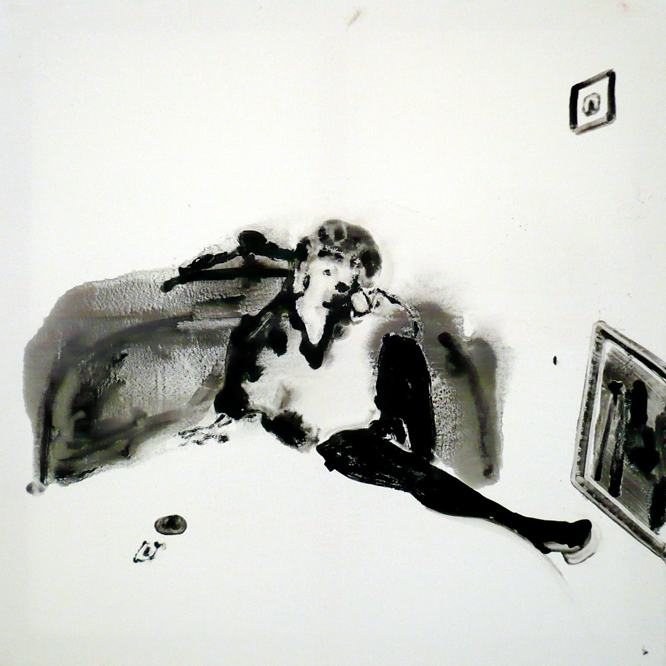
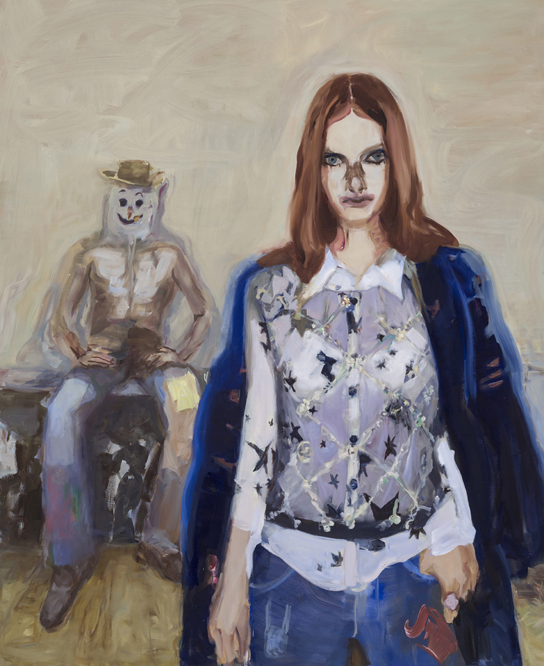
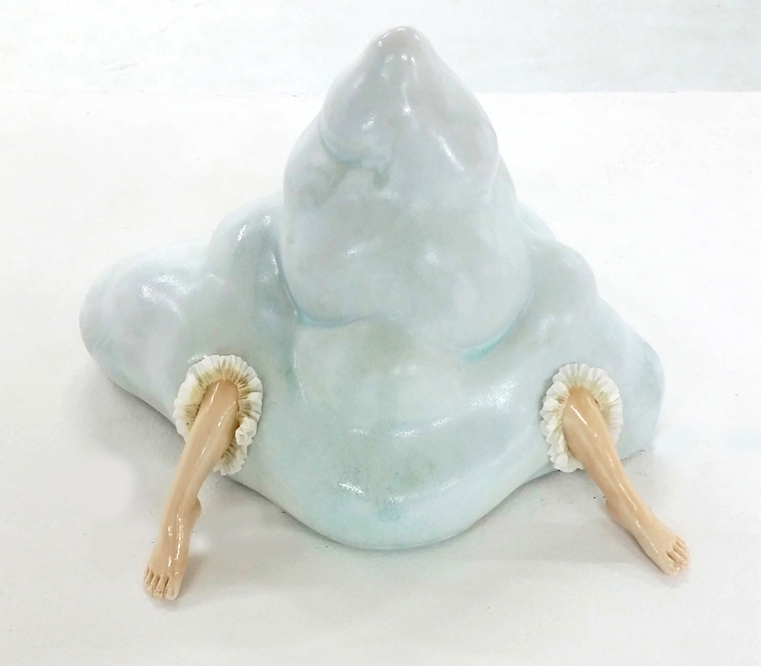
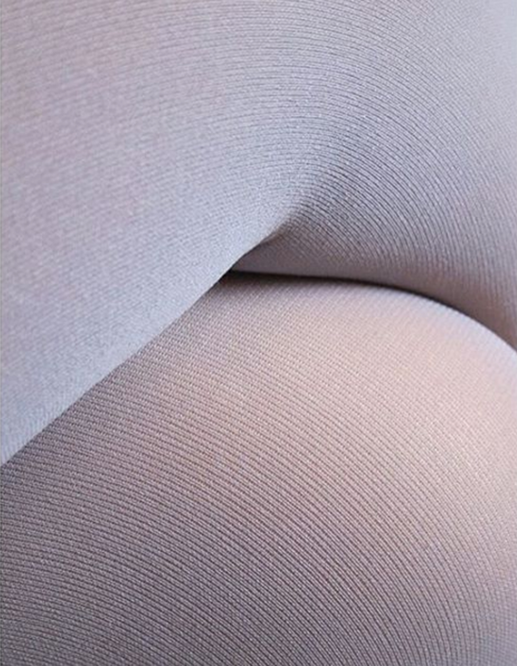
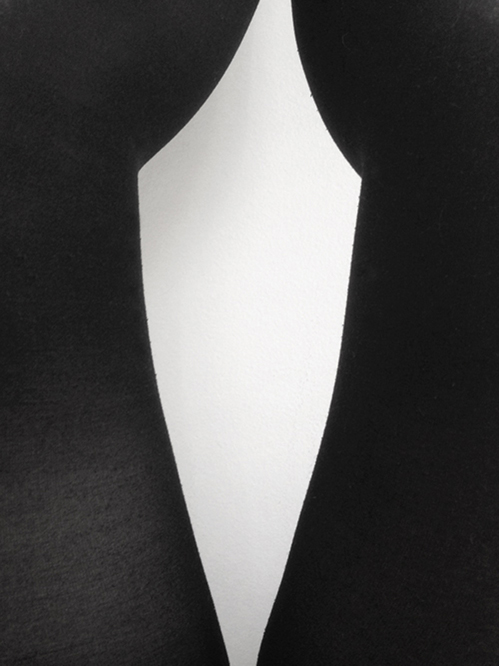





















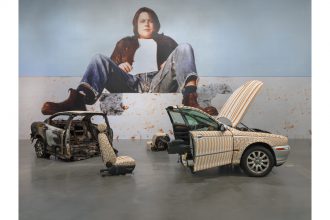
I worry that the gallery is either failing to understand or refusing to acknowledge the relationship between aesthetics and politics. That is, it’s all well and good to suggest that artwork can invert or transcend Laura Mulvey’s (ahem—yes, Mulvey’s) formulation of the male gaze, but it’s quite another to put that into practice. Despite the artists’ apparent good (read: radical, subversive, anti-patriarchal) intentions, much of the work in the show falls back into the well-worn traps of mundane titillation (Vandor), sensualized infantilism (Casasanta), or visual fragmentation of the female body (Moon, Daley) that accompany–and, indeed, define–the operation of the male gaze.
This is not to besmirch the artists or their work, as artists will do what artists do, and that certainly includes exploring and working-through their chosen media, their sexuality, and their politics… and artists are at their best when they make things that are difficult to parse or define (Werner’s persistent dedication to ugliness as an aesthetic tactic springs to mind here, especially as an example that resists the critique above). But for the exhibition organizers–and, by its assent, the critical press, including the exhibition “review” in NOW Magazine–to conflate hypothetical intent and aestheticized result seems at best intellectually sloppy, and at worst complicitly mercenary.